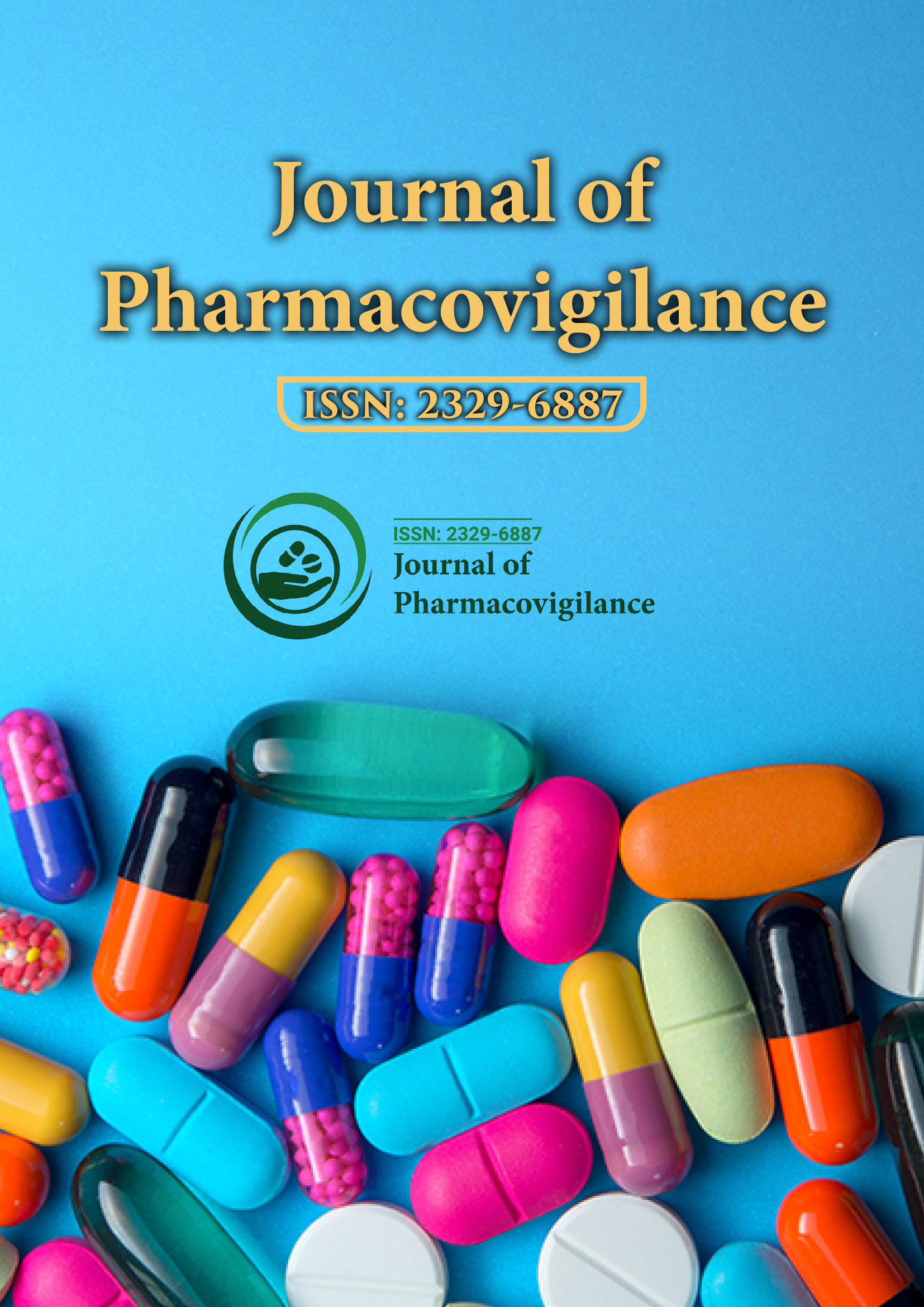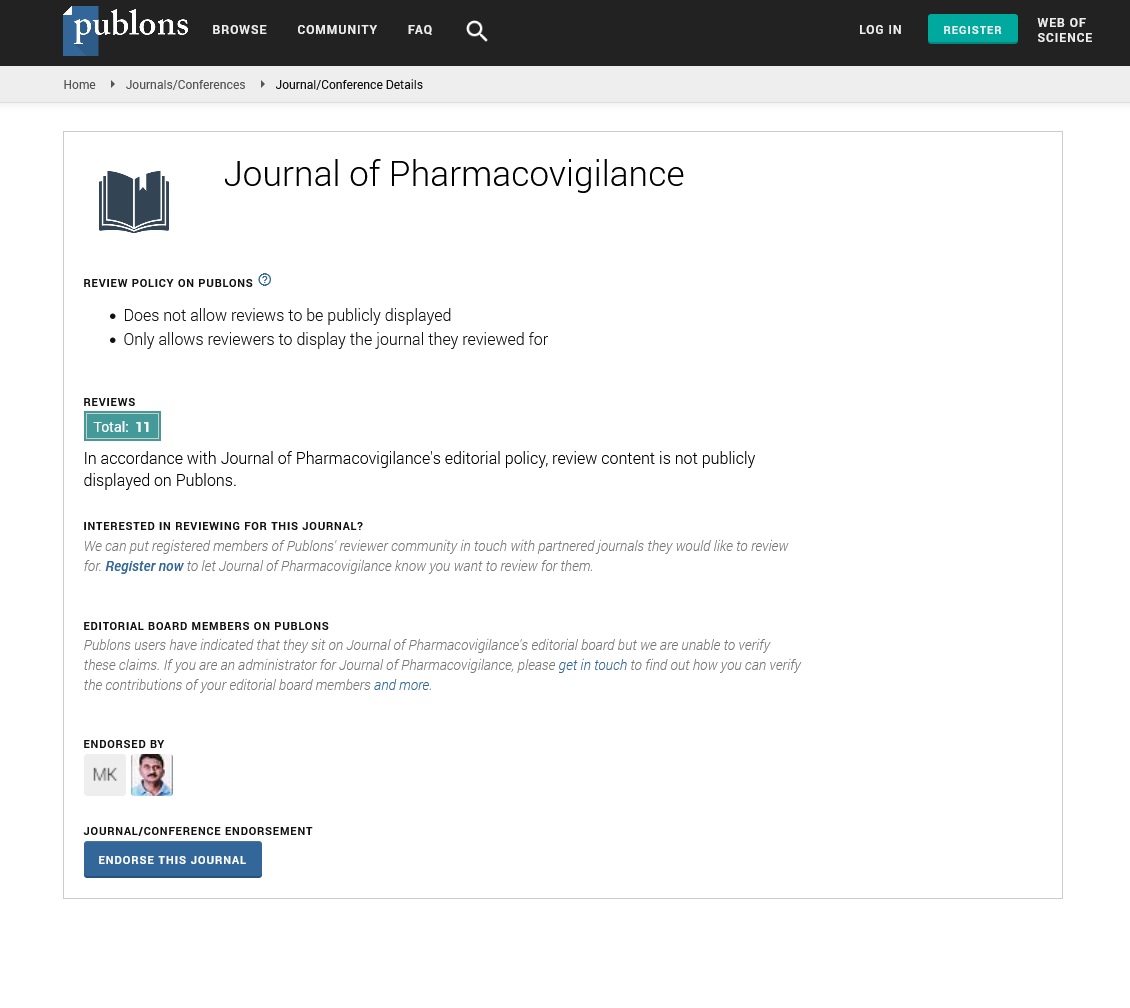Indexed In
- Open J Gate
- JournalTOCs
- The Global Impact Factor (GIF)
- RefSeek
- Hamdard University
- EBSCO A-Z
- OCLC- WorldCat
- Publons
- Euro Pub
- Google Scholar
Useful Links
Share This Page
Journal Flyer

Open Access Journals
- Agri and Aquaculture
- Biochemistry
- Bioinformatics & Systems Biology
- Business & Management
- Chemistry
- Clinical Sciences
- Engineering
- Food & Nutrition
- General Science
- Genetics & Molecular Biology
- Immunology & Microbiology
- Medical Sciences
- Neuroscience & Psychology
- Nursing & Health Care
- Pharmaceutical Sciences
Opinion Article - (2023) Volume 11, Issue 4
Assessing the Risk of Serious Adverse Events Associated with New Drug Approvals
Angus I Lamond*Received: 01-Jul-2023, Manuscript No. JP-23-22734; Editor assigned: 03-Jul-2023, Pre QC No. JP-23-22734(PQ); Reviewed: 17-Jul-2023, QC No. JP-23-22734; Revised: 24-Jul-2023, Manuscript No. JP-23-22734(R); Published: 31-Jul-2023, DOI: 10.35248/2329-6887.23.11.443
About the Study
As pharmaceutical research and development continue to advance, the introduction of new drugs into the market of improved therapeutic options for various medical conditions. However, ensuring patient safety remains a concern. This article delves into the critical process of assessing the risk of serious adverse events associated with new drug approvals. Through a comprehensive review of pre- and post-market surveillance strategies, this paper highlights the methodologies and challenges involved in identifying, quantifying, and managing potential risks to patients.
The introduction of new pharmaceutical products into the market is accompanied by both anticipation and apprehension. While these novel drugs hold the potential to revolutionize patient care, they also carry the risk of unforeseen adverse events that can impact patient safety. Rigorous evaluation and management of these risks are essential to uphold the principles of pharmacovigilance and ensure that the benefits of the new therapies outweigh their potential harms.
The assessment of new drug candidates begins with pre-clinical studies, where researchers investigate the compound's pharmacology, toxicology, and mechanism of action. Animal studies help identify potential safety concerns, guiding the decision to proceed to human clinical trials. During these trials, a series of phases evaluate the drug's safety and efficacy in human subjects. Adverse events are carefully monitored, recorded, and analyzed to determine their relationship to the drug and their severity.
Despite the stringent pre-market evaluation, certain adverse events may only become apparent when a drug is administered to a larger and more diverse patient population. Post-market surveillance serves as a mechanism for detecting rare or unexpected adverse events. Adverse event reporting systems, such as the FDA's Adverse Event Reporting System (FAERS) and the WHO's Global Individual Case Safety Reports (ICSRs) database, facilitate the collection of real-world data on adverse events experienced by patients.
Quantifying the risk of serious adverse events involves determining the likelihood of their occurrence and the severity of their impact. Risk assessment methods utilize data from clinical trials, post-market surveillance, and epidemiological studies to calculate probabilities and estimate the potential harm. Relative Risk (RR) and Odds Ratio (OR) are commonly employed to compare the incidence of adverse events in drugexposed populations to non-exposed populations. Bayesian modeling and meta-analyses also aid in refining risk estimates.
Several challenges complicate the accurate assessment of risks associated with new drug approvals. Under-reporting of adverse events, limited sample sizes in clinical trials, and variations in patient demographics all contribute to uncertainties in risk estimation. To mitigate these challenges, enhancing reporting systems, conducting long-term safety studies, and promoting transparent communication between regulators, manufacturers, and healthcare providers are significant steps.
The assessment of the risk of serious adverse events associated with new drug approvals is a complex and ongoing process that demands the collaboration of pharmaceutical companies, regulatory agencies, healthcare providers, and patients. While pre-market evaluations provide preliminary insights, post-market surveillance is essential for detecting rare and unforeseen adverse events. Quantifying risks, mitigating challenges, and implementing effective risk management strategies collectively contribute to safer and more effective pharmacotherapy. As the field of pharmacovigilance continues to evolve, ongoing research and collaboration will lead to improved methods for assessing and managing risks, ultimately safeguarding patient well-being.
Citation: Lamond AI (2023) Assessing the Risk of Serious Adverse Events Associated with New Drug Approvals. J Pharmacovigil. 11:443.
Copyright: © 2023 Lamond AI. This is an open-access article distributed under the terms of the Creative Commons Attribution License, which permits unrestricted use, distribution, and reproduction in any medium, provided the original author and source are credited.

